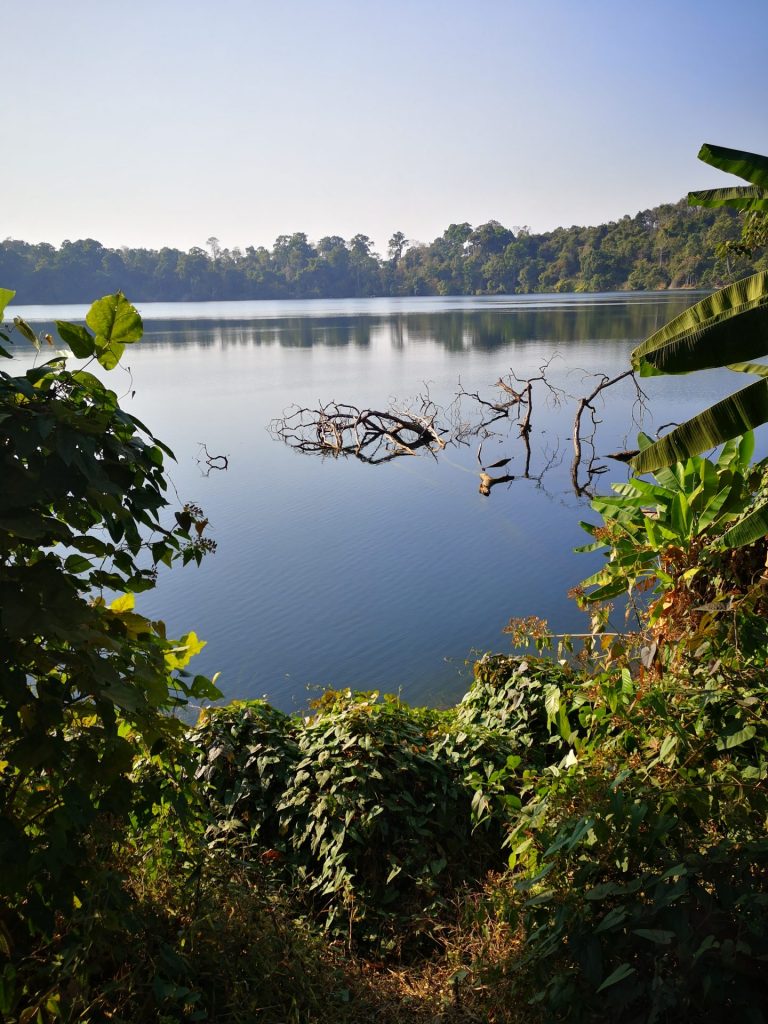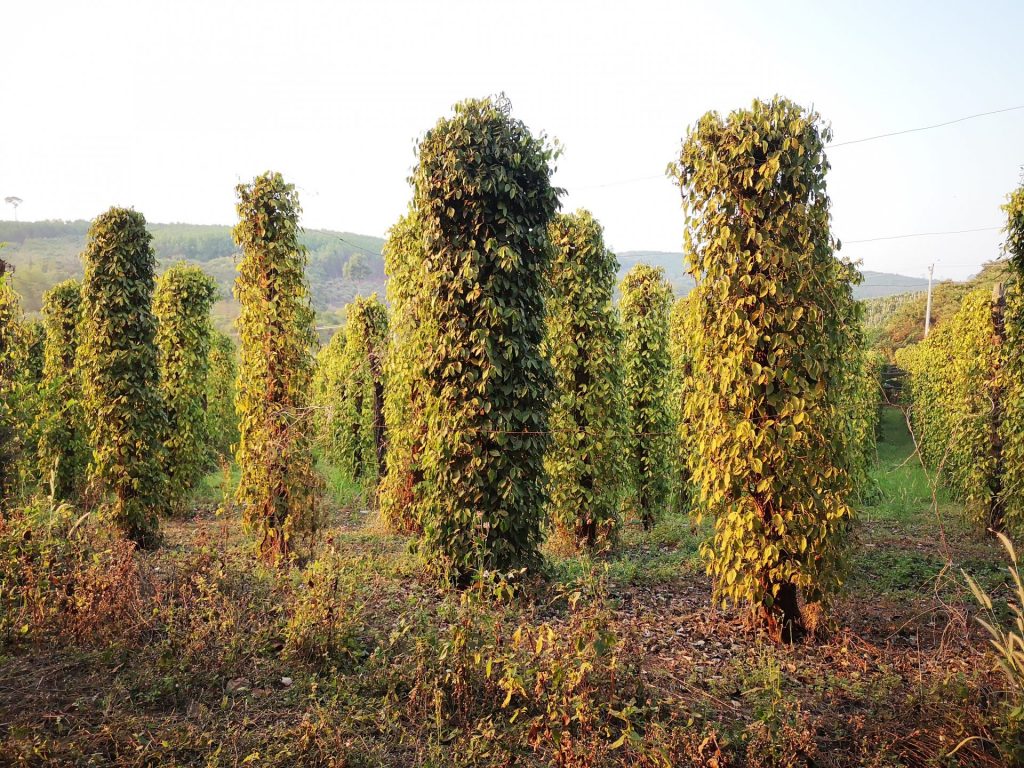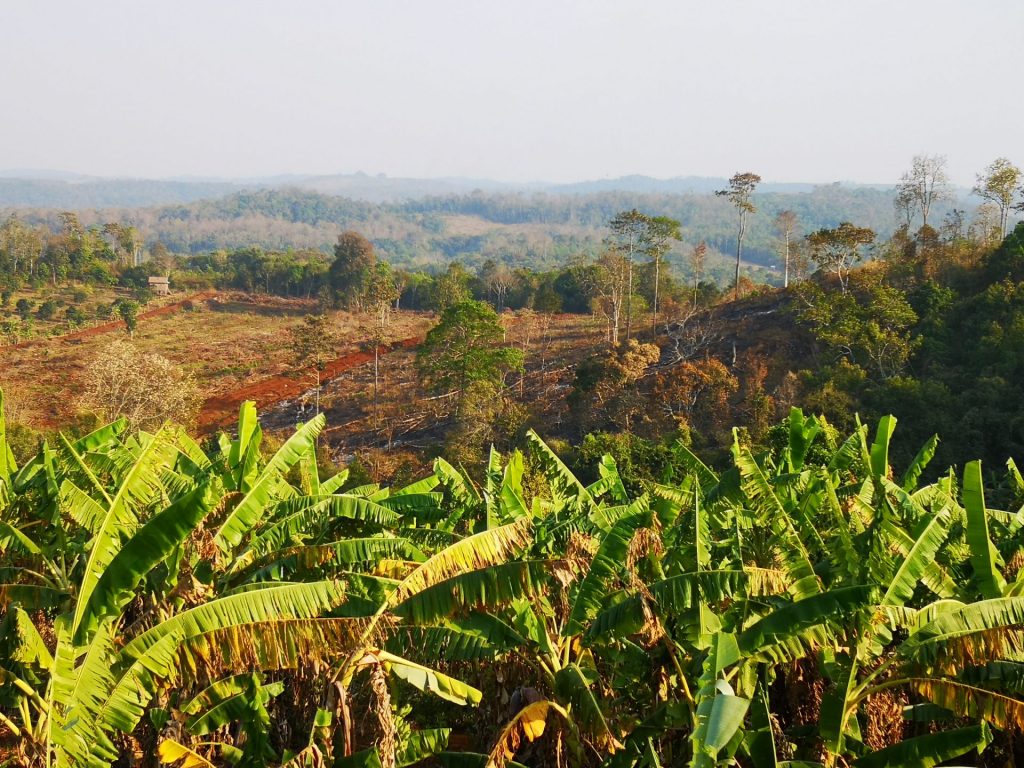To Jo’s delight, our first destination in Cambodia will be close to the Laos border off the tourist trail again. Everyone else is heading to Siem Reap for Ankhor Wat so we’re the only whites on the bus to the northern town of Banlung in the district of Ratanakiri.
It is shocking how the countries of Indochina have suffered during the twentieth century, Cambodia arguably more than most. I shan’t retell the horrors perpetrated by the monstrous Pol Pot and the torturers and murderers of the Khmer Rouge who killed 1.5 to 2 million people, almost a quarter of the population of Cambodia, between 1975 and 1978 ( see Cambodian Genocide ). But those horrors and their legacy will crop up again and again as we travel throughout the country.
It is here the province of Ratanakiri, where we are now, that Pol Pot established the core of his Khmer Rouge insurgency in the 1960s. Today it seems, on the surface, an unlikely recruiting ground for communist radicals. It’s beautiful countryside, Cambodia’s most sparsely populated region, with lush forests and rolling mountains, quite different from the rest of the country. There are only two small provincial towns in Eastern Cambodia; Banlung and Sen Menorom. Banlung is a busy unattractive commercial town, as soon as we arrive we call our hotel and ask to be picked up.
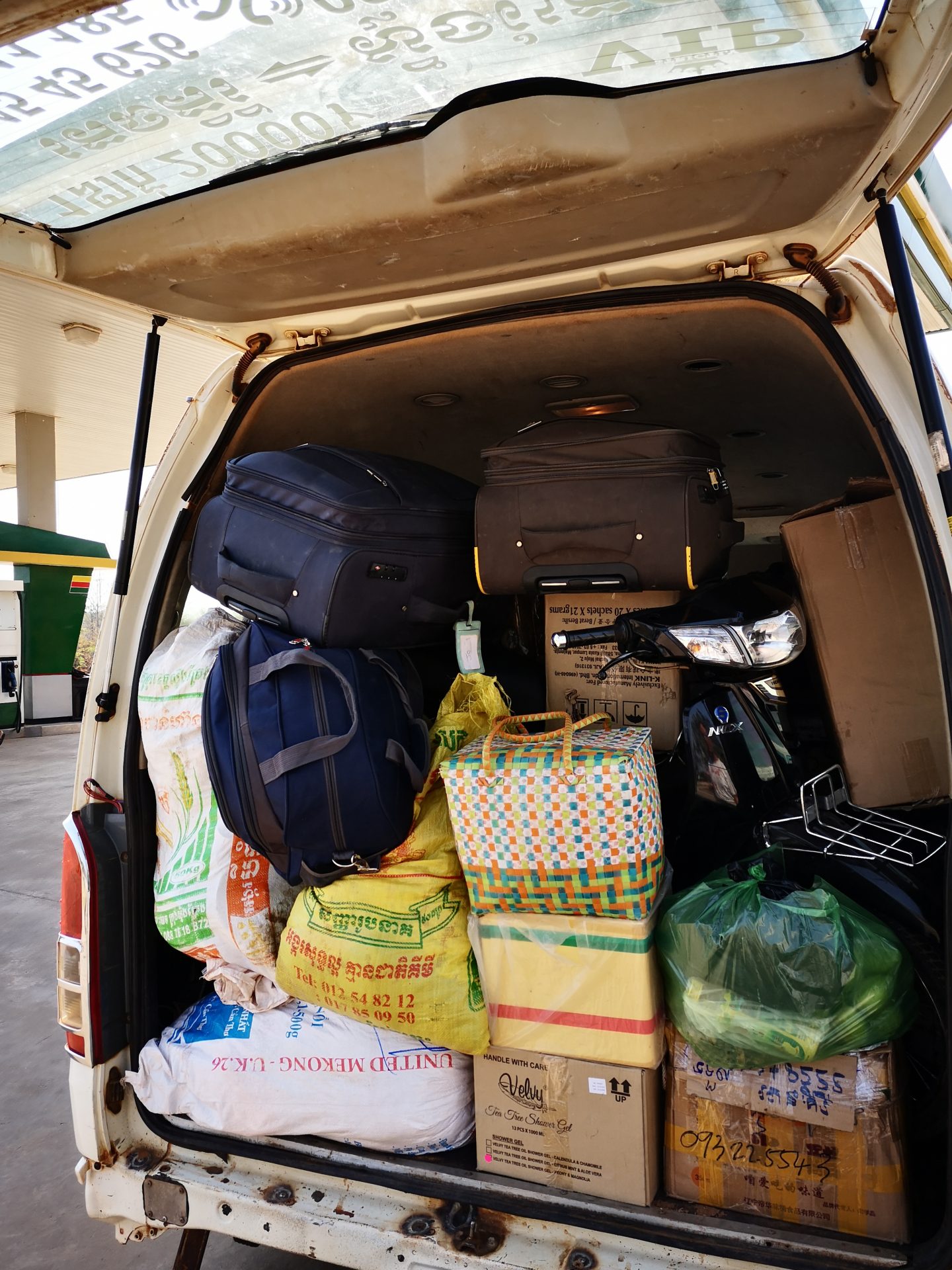
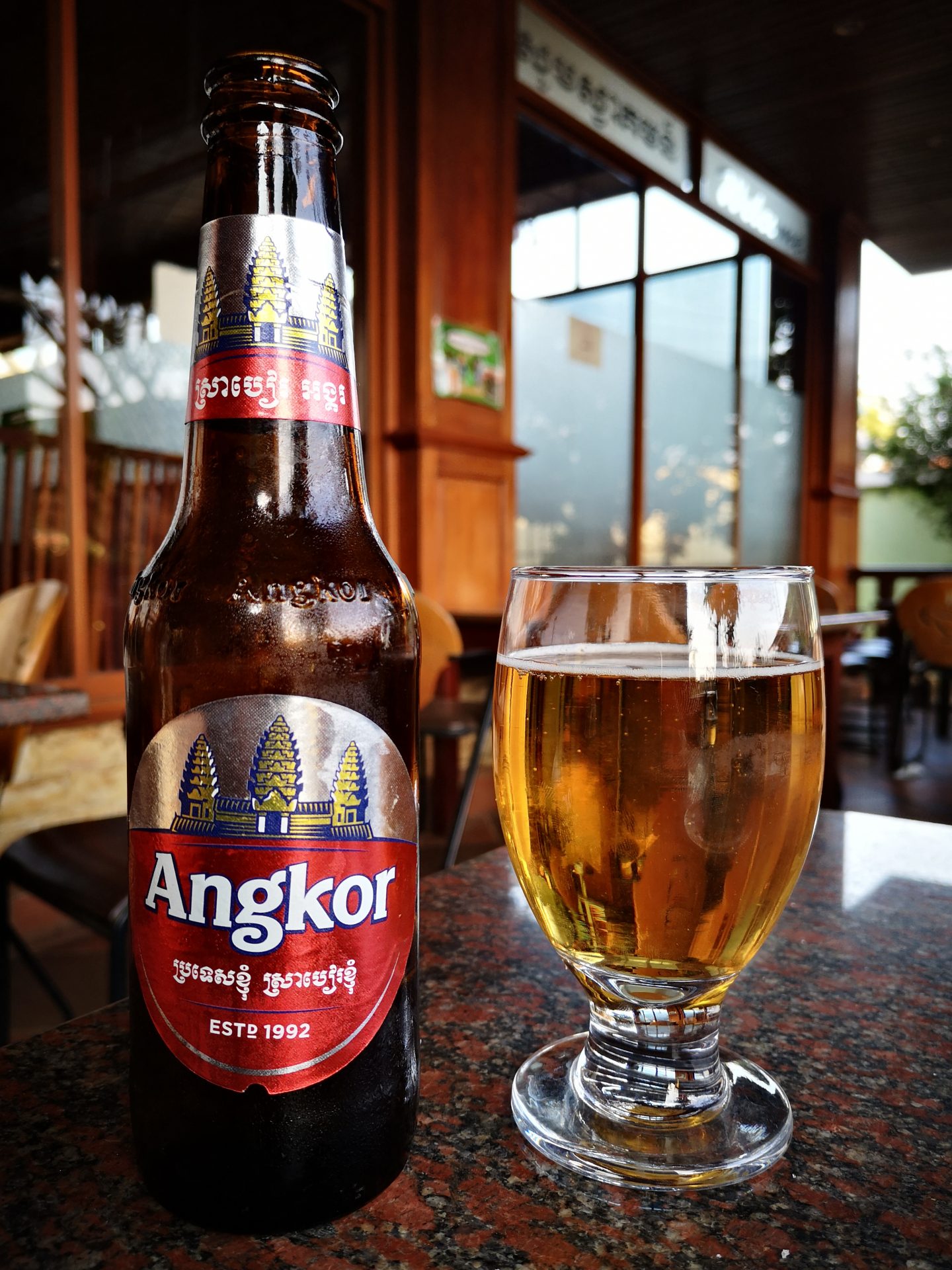
Our host is a big Polish guy who arrives in a beaten up rusty, dusty Toyota 4×4. The Pole is a man of few words, he has an engaging smile. Fifteen minutes out of town down a dusty red road we turn into the grounds of the Ratanakiri Paradise hotel. It looks very attractive – big semi detached bungalows with terraces overlooking the swimming pool and the mountains – but it ain’t the paradise it purports to be. The man from Warsaw has some friends over from Poland so he’s not particularly interested in us, his only guests. He’s preoccupied with drinking rice sake with his mates and listening to Polish rock music through the huge speaker in the open restaurant. Jo’s not happy; the showers are freezing, there’s no housekeeping (actually there’s no service at all), a diesel generator in the garden rumbles throughout the night, nights which are cold in a bed without blankets, the restaurant is poorly stocked, the Polish rock music has to be endured until the early hours of the morning. And the WiFi doesn’t work much so no blogging can be done. But there’s a decent swimming pool and Wojciech does have an endearing smile. He also has the usual shelf full of traveller’s abandoned paperback books in the lounge. I see the spine of a book I recognize: it’s a hardback edition of Ian McEwan’s Solar, a novel of infidelity and global warming. And remarkably this damp copy with slightly mouldy endpapers is signed by Ian McEwan! Finding another book is like having a junkie’s fix.
The following morning we escape Warsaw for an eight mile round trip walk to the volcanic crater lake at Yeak Laom. We pass rubber tree plantations and fields of pepper plants (pepper the spice). The roads are of fine red sand (one of our tuk tuk drivers called it Cambodian snow), when we reach the lake we look as if we’re wearing knee length ochre socks – we’re ready for a swim.
Yeak Laom lake is on a list of the top 15 most beautiful crater lakes in the world. It’s circumference is two and a half kilometers and it forms an almost perfect circle around which are several teak wood jetties. The water is emerald green, clean and surprisingly warm for a 50 metre deep lake. There’s a small entrance fee and a market selling local produce at the entrance – we buy crisps and a melon, which turns out to be a grapefruit!. Halfway round the lake we settle onto a big empty jetty for a largely undisturbed afternoon in the sun, occasionally diving into the lake to cool off.
In the late afternoon sunset we complete a circumnavigation of the lake. It’s surrounded by rising banks of rainforest and there are a lot of birds about – we spot a small brown owl and flocks of bright green parrots. At the market we stop at a beekeeper’s stall. He’s got honeycombs, fresh honey and beeswax for sale. I buy a plastic bottle full of honey harvested from wild giant honey bees.
We can’t cope with Paradise any more so book a four hour bus ride for the following day further south to Sen Monorom in the province of Mondulkiri. As it’s the dry season (ie winter), the forested hills of predominantly deciduous trees are not in leaf. We’re racing along the excellent tarmac I76 highway in a brand new and very comfortable Virak Bentham VIP transit van. We could be somewhere in Europe in winter, except it’s almost 30 degrees.
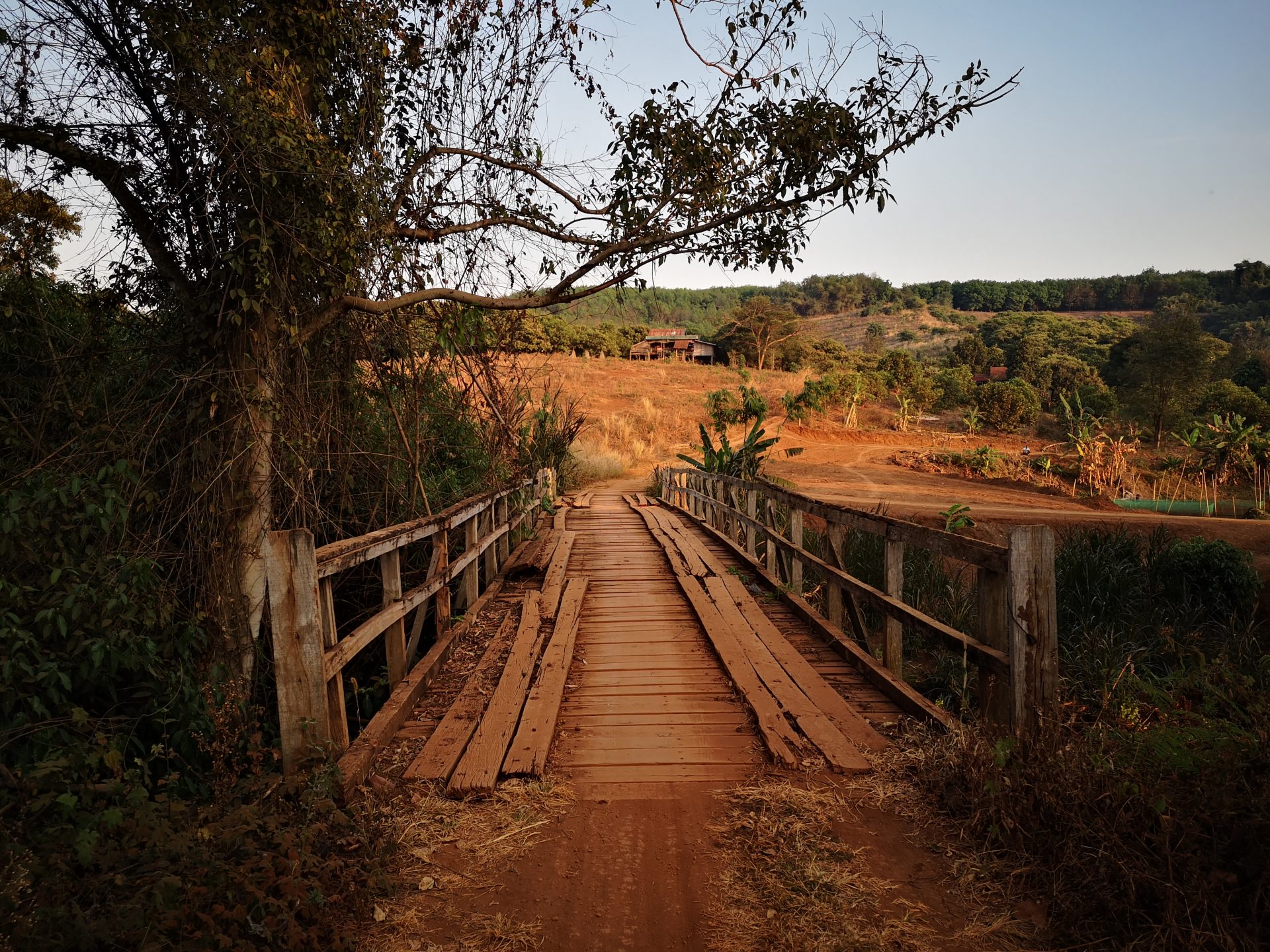
In Sen Monorom we walk the short distance from the bus station to our accommodation which we discover is in the midst of a major expansion project – it’s a building site. We can’t understand why recent guests don’t report this fact in their reviews or why the establishment owners don’t come clean about what’s going on. We tell the owner we want to cancel and Jo communicates with Booking.com to get a full refund. We trudge back into town to get some WiFi access and an alternative place to stay. Jo discovers Green House retreat just outside the town. We take a tuk tuk to investigate and it’s a lovely development of Khmer style hardwood bungalows on stilts set amongst the trees. When a hotel is overpriced or beyond our budget, Jo is happy to negotiate on price and she knows that she can get up to 15% off the advertised booking.com price as that’s their commission. The owner is initially reluctant to bargain but Jo charms and cajoles her way to what she calls a mutually beneficial negotiated deal.
Sen Monorom is the base for various excursions into the surrounding countryside including trekking, waterfall visits, birdwatching, ziplining, elephant and ethnic village encounters. Some of these are a bit dubious (the elephants and the ethnic village) and I zipped my last line with my eldest daughter Hannah about 20 years ago. I always enjoy birding but a one day bird watching excursion for two people here will cost a mighty $260. I think that’s crazy – maybe they’re trying to minimise the number of visitors. Even trekking for a day in the local national park cost about $100 each. I understand the need to generate income from ecotourism but these prices make ventures into the protected areas quite elitist activities and well beyond the budget of most young travellers (and oldies like me on a five month budget).
So we hire a motorbike for $14 and ride the 75km round trip to Bursa waterfall. It’s mostly an ok road with occasional challenging stretches of soft sand and loose gravel – we have to keep our nerve and take it easy. This region of Cambodia has the densest coverage of trees in the country but we can see what’s going on. The government has on the one hand designated large areas of land as protected areas, and on the other hand, it has sold vast logging concessions to national and foreign companies. And it’s not just the big boys chopping down trees, it’s a cottage industry too. Consequently Cambodia has one of the highest rates of uncontrolled deforestation in the world.
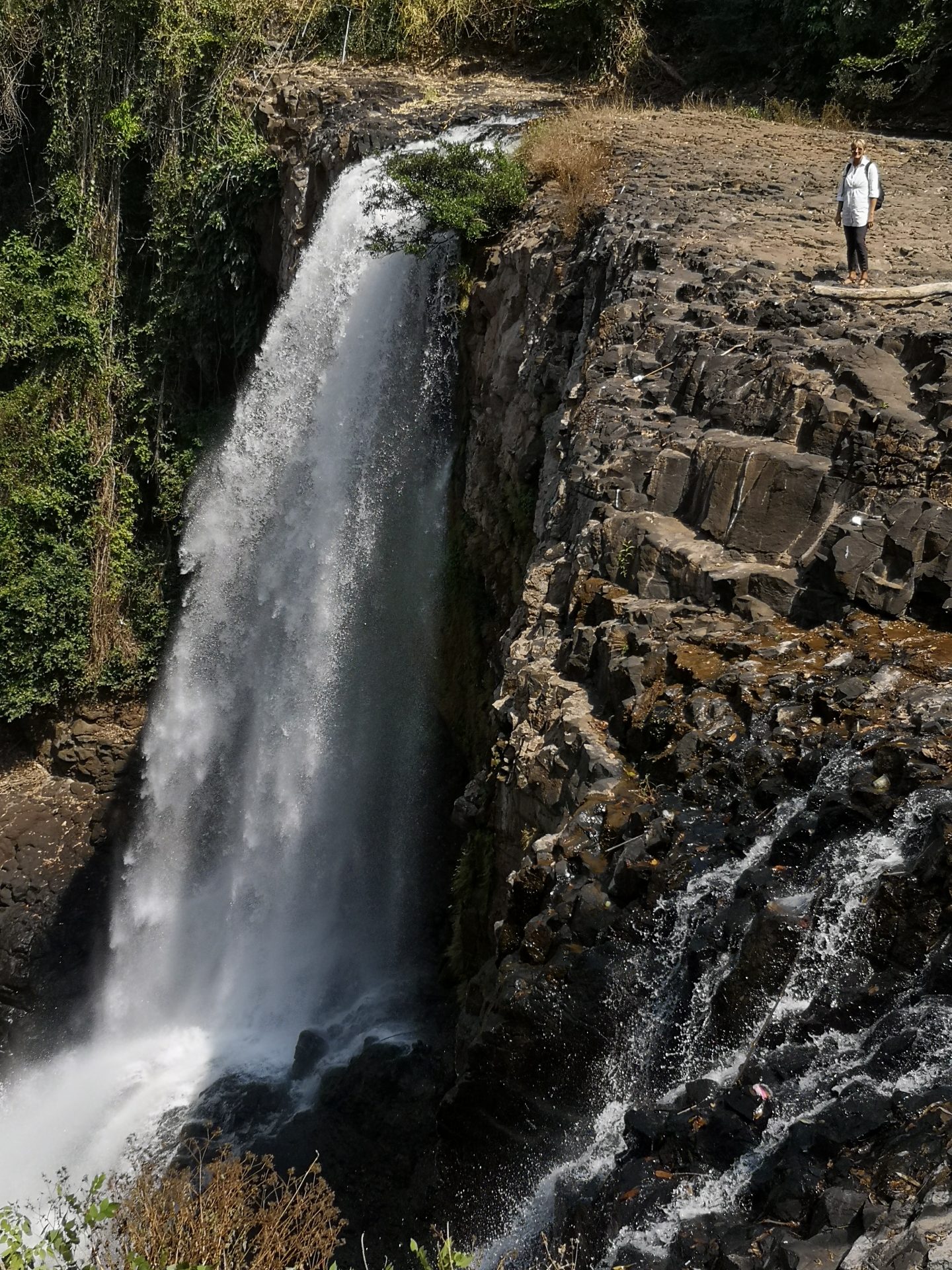

We see the big logging trucks, the pickups and even motorbikes transporting timber. Every few miles we see wastelands of destroyed forest, especially near the highway. Halfway to the waterfall we stop for a drink at a small roadside cafe atop a hill. From here we have a panoramic view of the hills. There are still a lot of trees out there but their disappearance is very much business in progress. The woman who runs the cafe is one of the Bunong people who have inhabited the region for about 2,000 years. She speaks English well. Orphaned as a child she lived for some years in Phnom Penh – a city she dislikes ‘too dirty, too busy’. She waves her arm at the surrounding hills – ‘five years ago it was all trees’ she says ‘then they build a new road and people come from the lowlands. They say this is not your land.’
The Bunong have been working the forest sustainably for hundreds of generations but have no legal title to it so people just grab it, chop down the trees, build houses, plant banana, pepper and rubber plantations. So bye bye wildlife including monkeys, bears, gibbons, loris, a multitude of bird and butterfly species and so much more. And bye bye ecotourism. She is not certain or hopeful of her future, and absolutely no faith or trust in the government.
But she smiles regardless and generously gives us a bunch of bananas and passion fruits, some of the best we’ve tasted in indochina. Jo likes the waterfall – you can get up close to it at the base and stand in the riverbed immediately next to the cascade of water at its head. I don’t know what it is but most waterfalls underwhelm me – just a big let down of water! But I shall have to eat my words as we’ll encounter some magnificent river cascades.
As in Laos, poor Cambodia is littered with unexploded mines, mainly in the west of the country along the Thai border, where there exists the world’s longest minefield, laid by the Cambodian government in a attempt to keep out the Khmer Rouge who, after their overthrow, were waging a protracted guerrilla war from inside Thailand. An unintended consequence of this has been the protection of the forests along the Thai border from logging, it being dangerous to chop down trees in minefields.
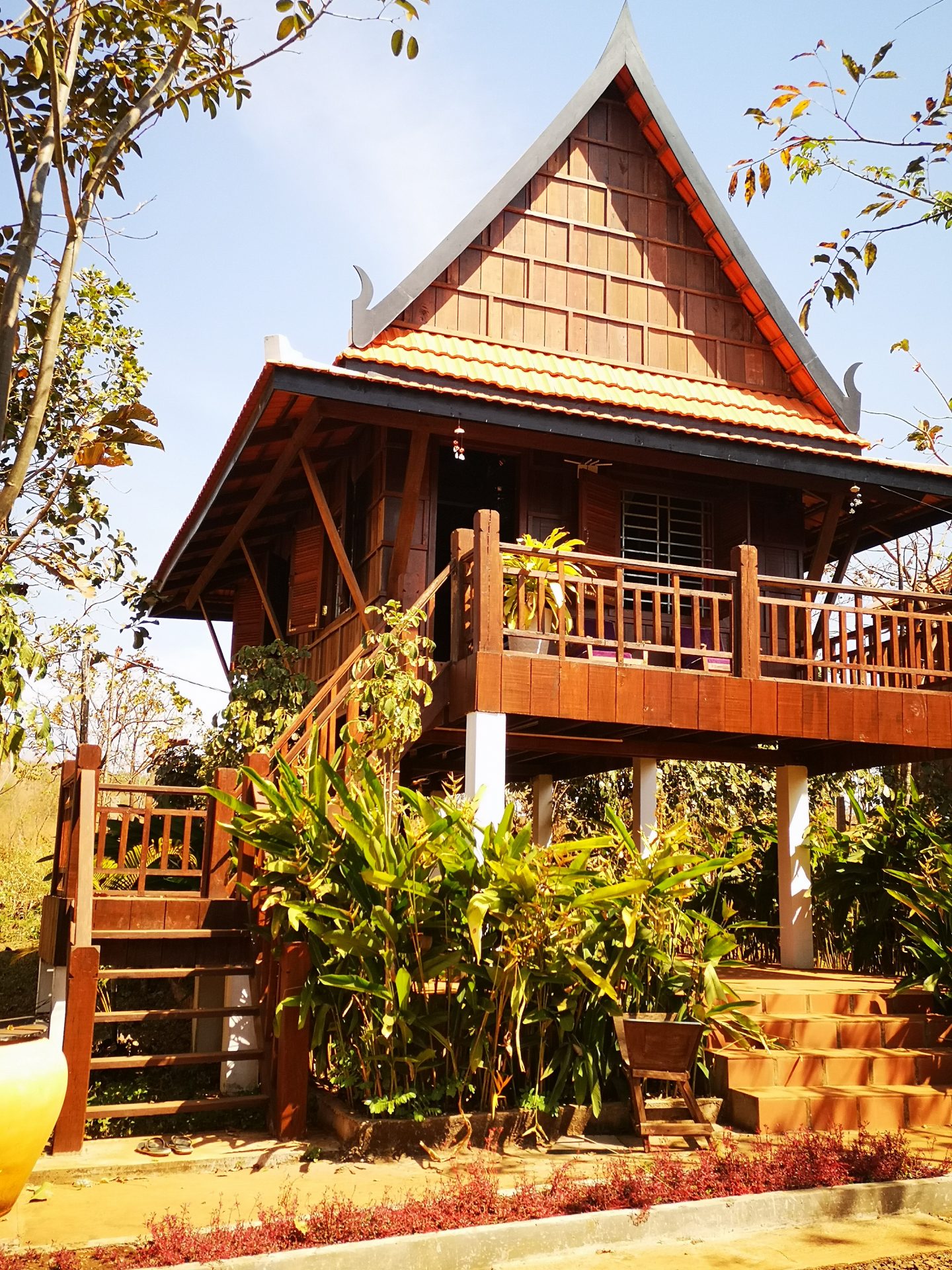
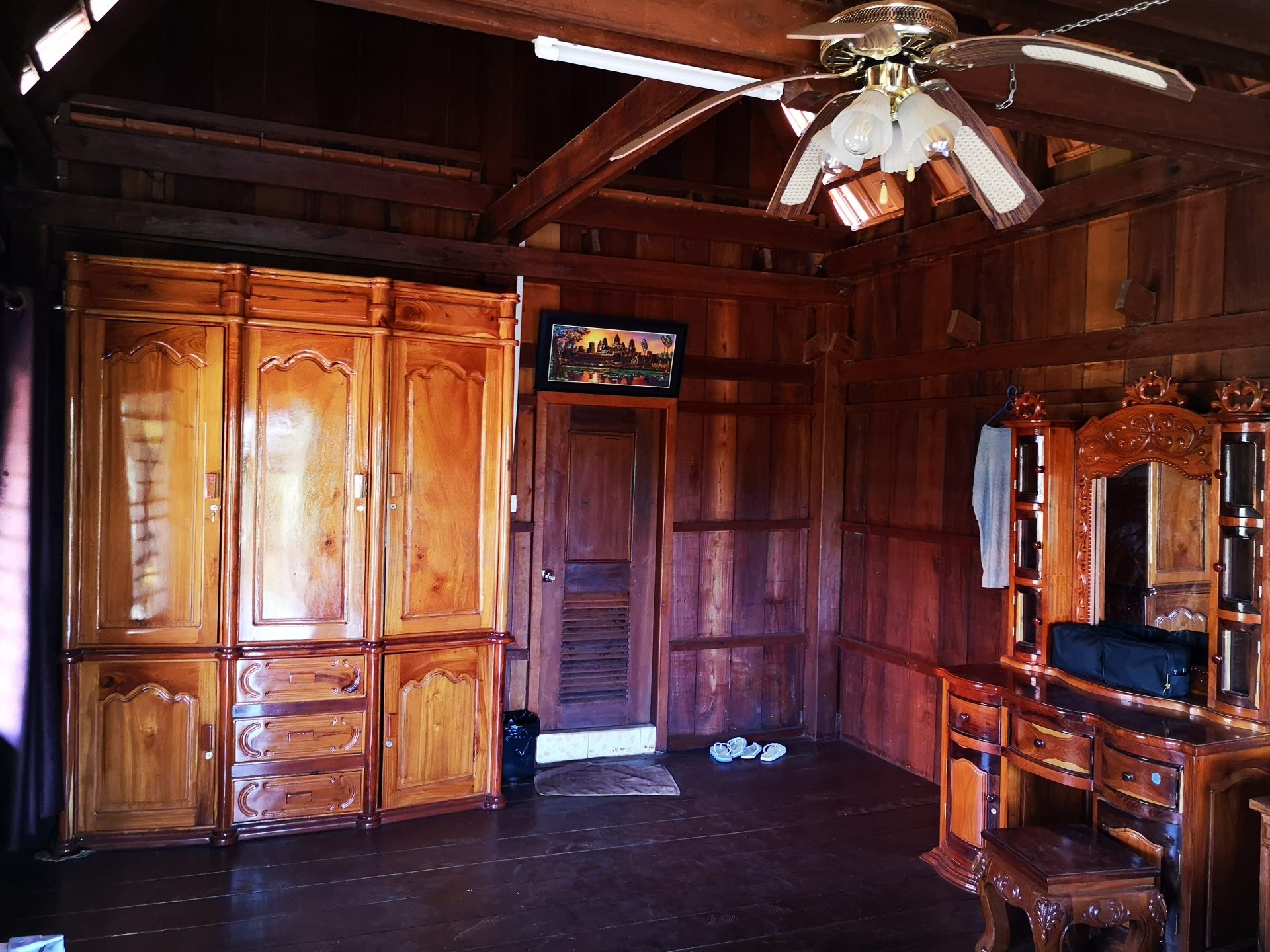
The painstaking job of clearing these minefields was alleviated by a couple of ingenious Belgians who hit upon the idea of using Giant African Pouched Rats to help clear them. These rats have been nicknamed HeroRats. It takes about nine months to train a rat to sniff out landmines. You can try it at home. All you need is; a young Giant Africa Pouched Rat (a couple of months is ideal), a mobile phone, several thousand bananas (not all at once), about a dozen packs of TNT explosive and a rat harness (so you don’t lose the rat). Oh and lots of spare time. You’re all set.
First thing to do is select a ringtone on your mobile phone – something you like as you’ll have to listen to a sample of this ringtone several hours a day for up to six months. Now make friends with your Giant African Pouched Rat, give him or her a name, Ronald perhaps (not to be confused with Donald, an entirely different sort of rat). Give Ronald a small piece of banana, and when you do this simultaneously play your selected ringtone. Do this lots every day for about three months after which Roland will associate banana with the ringtone. Now take your TNT explosive packs and bury them around your garden. Put the harness on Roland (so you don’t lose him) and take him for a garden stroll. He has a very acute sense of smell and he’ll be inquisitive. When he comes across a TNT package, play the ringtone and give him some banana. Do this lots everyday for several more months. Ronald will now associate TNT with the ringtone and a mouthful of banana. Next, continue the TNT hunting exercise but, and you’ll be glad to hear this, when Ronald sniffs out some TNT you don’t have to play the ringtone anymore – just give him some banana. After a few more weeks or months Roland will associate finding TNT with a banana treat – clever eh. You’re ready to go proper landmine clearing. Ronnie will be good for about five years landmine hunting after which he can be pensioned off to one of the many HeroRat retirement homes to live happily ever after.




